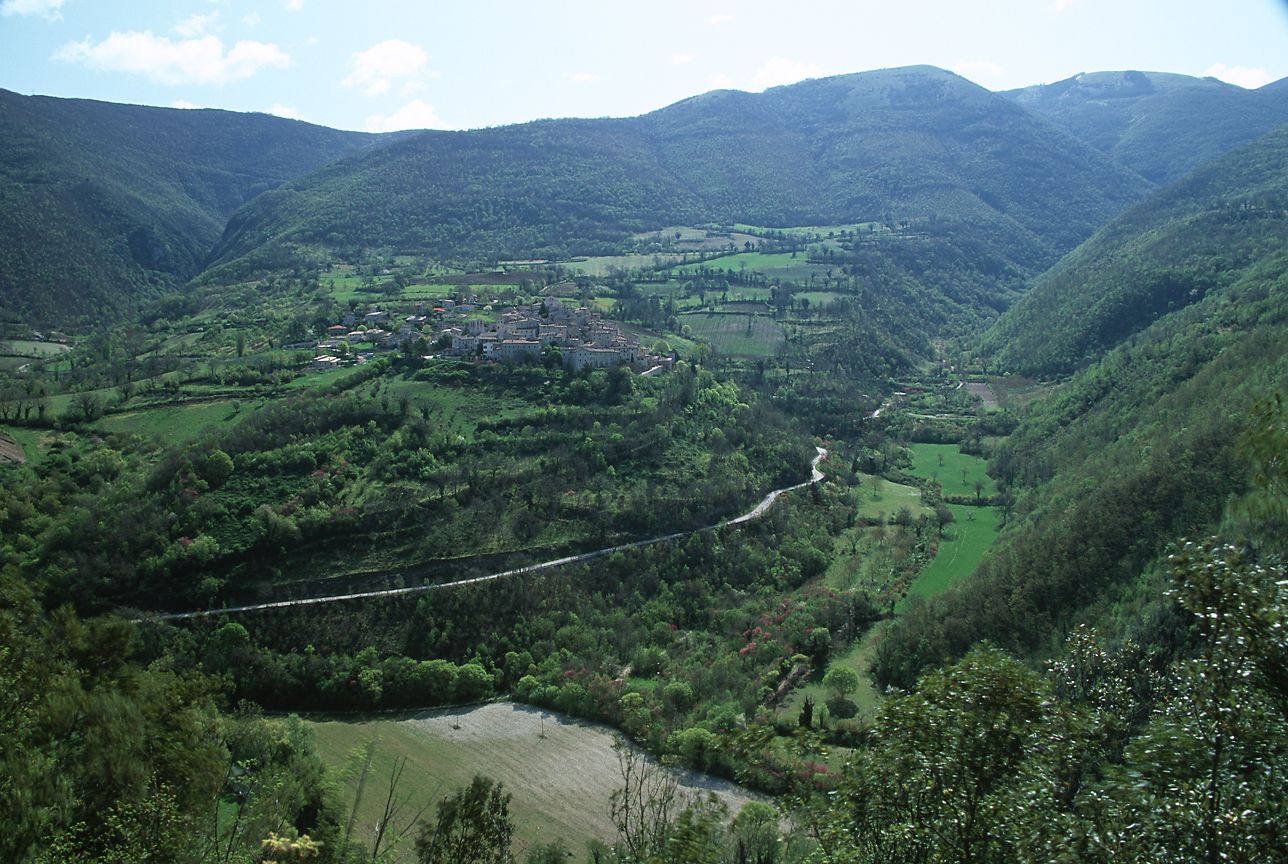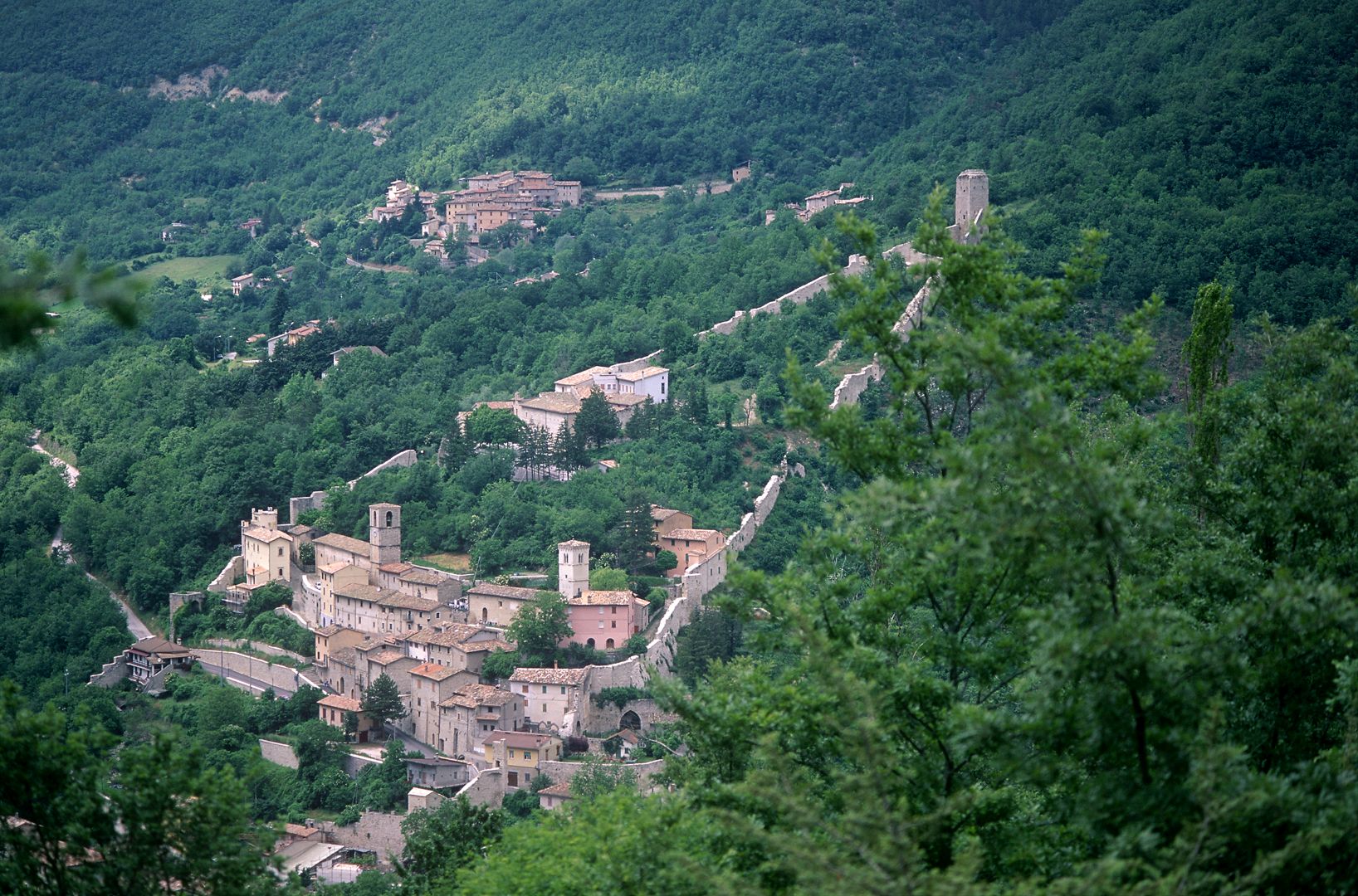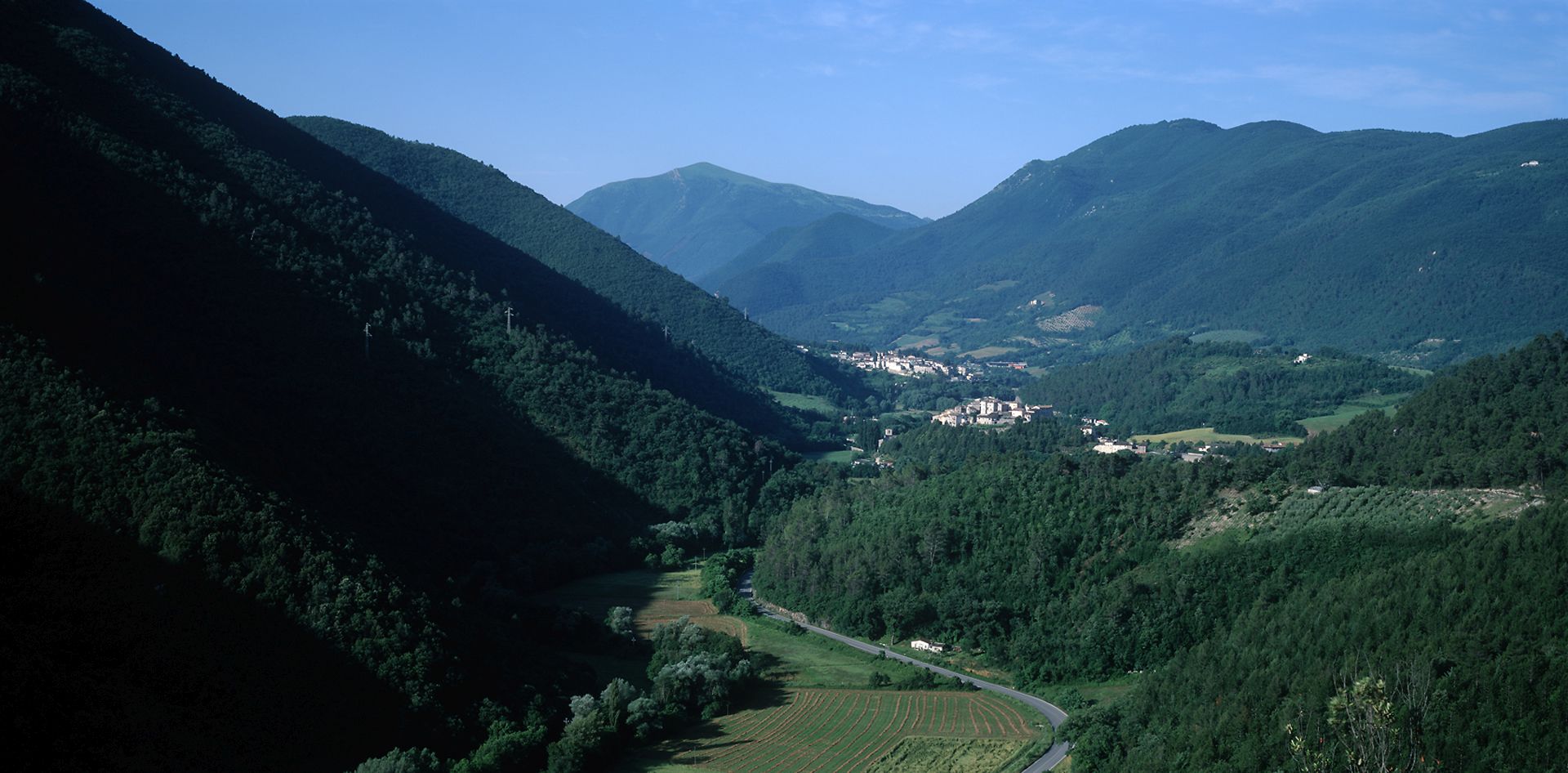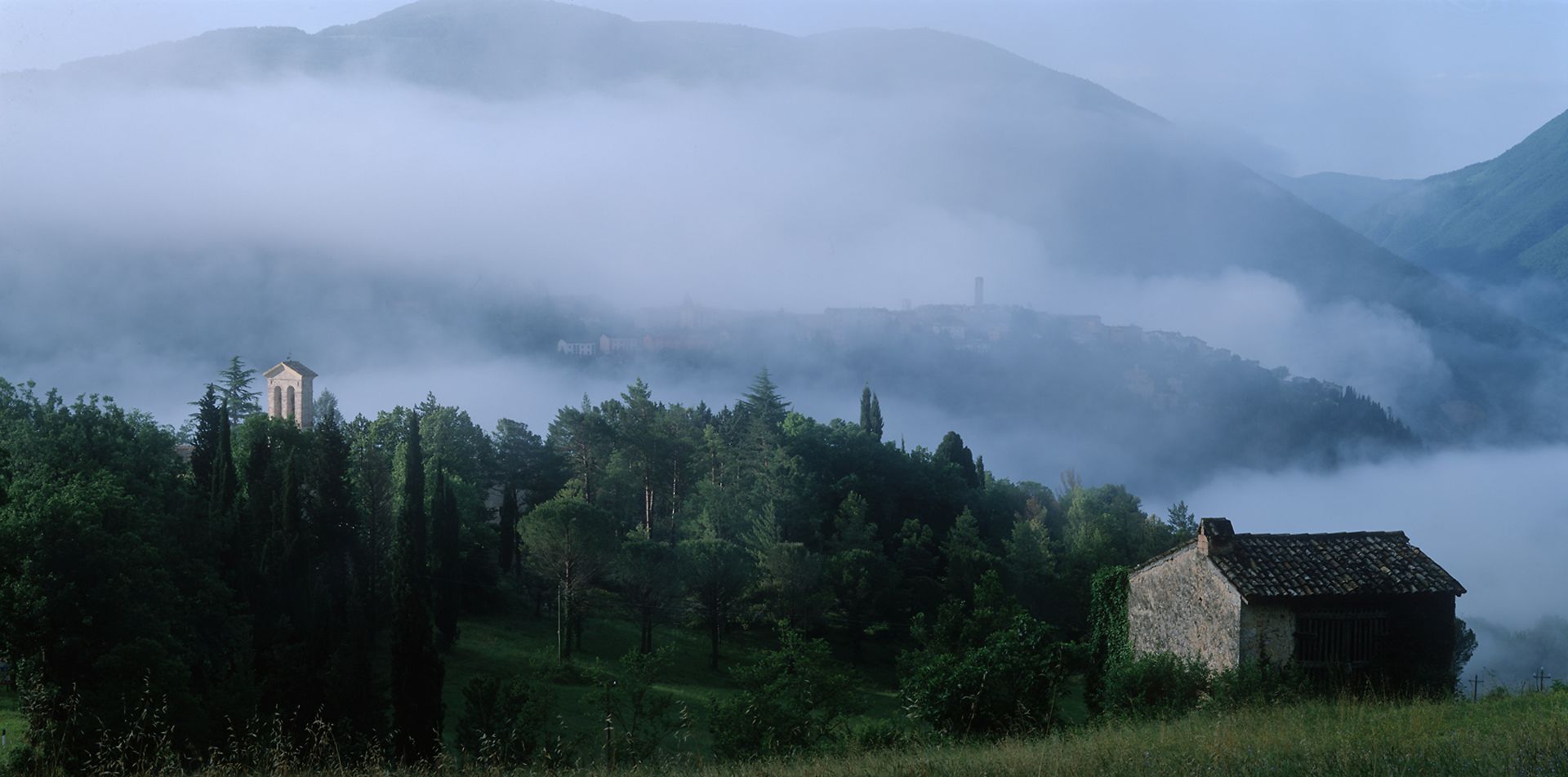Umbrians will tell you proudly that their region is “il cuore verde d’Italia” (the green heart of Italy), and moreover that the phrase, ubiquitous in promotional material, comes from a poem by Giosué Carducci. Even the comprehensive Wikipedia entry on Umbria says so. Well, all I can say is that it’s always a good idea to check original sources, because I did, and that is not actually what Carducci wrote. In fact, in the poem Le Fonte del Clitunno, what he says is “Salve, Umbria verde” (hail, green Umbria). Whether he considered it the heart, liver or spleen of Italy cannot be determined on that evidence.

Having said that, looking at the picture of the town of Vallo di Nera above, you can see why he would have said it, had he only thought of it.
And one can forgive the Umbrians for wanting a slogan with a bit of cachet. After all, when Umbria came into existence as a region of the newly-unified Italy in 1860, it was largely for administrative reasons, and the first time that the name had been used to denote a discrete region since antiquity. Not for them were the Renaissance glories of neighbouring Tuscany. Instead the period between the fall of the empire and the Risorgimento first saw the various towns and cities absorbed into the Lombard Duchy of Spoleto, then fighting each other in the interminable proxy wars of the Guelphs and Ghibellines, then picked off one by one by the Papacy.
I have read that, even today, Umbrians are less likely than any other Italians to define themselves by their region. They are more likely to say that they are from Perugia, Terni, Assisi, Spoleto or so on.
Umbria is defined by its valleys and rivers. South of Perugia is a large horseshoe-shaped valley that was once a huge lake, then a swamp, then fertile farmland. The western lobe is the valley of the Tiber river, and the the eastern is that of the Clitunno. The third main river in Umbria is the Nera, which is further east yet, into the Apennines. We met it earlier where it flows through the gorge of Narni before it joins the Tiber.

The Nera has two very different personalities. Downstream, it flows from east to west past the city of Terni, through a broad floodplain, now partly industrialised. Upstream, it flows roughly from north to south in a steep valley in the Apennines. That valley has the happy title of Valnerina, or the “valley of the little Nera”.

And the Valnerina is charmingly beautiful. The river winds through steep gorges, the hillsides covered with thick woodland. Towns, villages, abbeys and monasteries perch on hilltops in defensible positions, or tumble down the slopes behind fortifications.

Unhappily, being on one of the Apennine fault lines, the towns of the Valnerina have suffered major damage repeatedly from earthquakes, most recently in 2016. It is a tribute to the stoicism and grit of the inhabitants that most towns have been rebuilt many times over during their recorded history.

The great currents of history have largely passed the Valnerina by. The big powerful towns like Spoleto and Perugia are further west where the country is flatter and wealthier. The local saints tend to be hermits and founders of monasteries. They were attracted there, one assumes, precisely because one was less likely than elsewhere to encounter an invading army on one’s way down to the narrow floodplain to harvest some turnips for dinner.

We stayed in the Valnerina during an unusually cold and wet June. The compensation was that in the mornings the valley filled with mist and was at its most mysterious and beautiful.


2 Replies to “Valnerina: The Green Heart of the Green Heart of Italy”